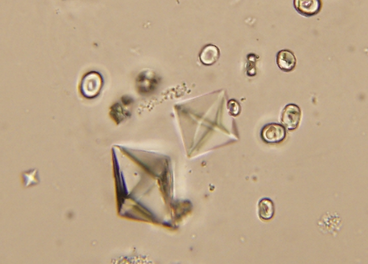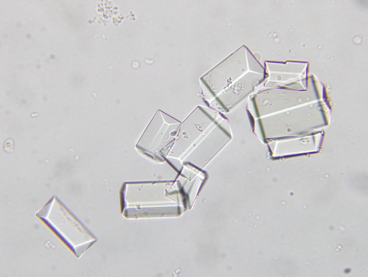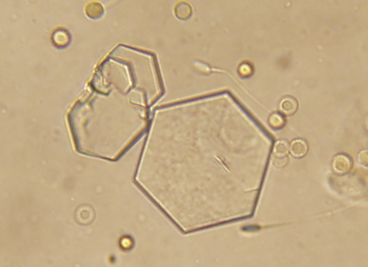Image of the month
Being crystal clear about crystalluria
Crystals only form in urine that is supersaturated with lithogenic substances. Therefore, crystalluria represents a risk factor for urolith formation. Crystalluria can aid prediction of urolith composition, serve as a marker for undiagnosed disease (e.g. urate crystals in dogs with protovascular shunts), and index therapy effectiveness (e.g. castration to resolve cystinuria).

Crystalluria (or lack thereof) should never be used as the sole indicator for urolith disease. Here are reasons why:
- Uroliths can be present without crystals.
- Crystals can be present without uroliths.
- Increases in urine pH favor struvite crystals even in dogs and cats with non‐struvite stones.
- Once uroliths form, crystalluria lessens in severity or disappears; this is because less energy is needed to attach minerals to preformed uroliths (stone growth) than to precipitate to form new crystals.

Although crystalluria is proof that urine is supersaturated with lithogenic substances and a risk for urolith formation, care must be used to not over‐interpret the significance of crystalluria in urine samples that are:
- collected by owners
- refrigerated prior to analysis
- sent out to laboratories for analysis
- analyzed more than 30 minutes to 2 hours after collection

In vitro changes may not represent in vivo conditions. Therefore, analyze urine in your clinic as soon as feasible after collection to achieve the most reliable results.